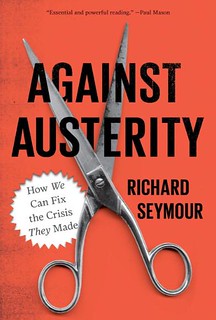Saturday, July 07, 2007
Speaking of hygeine... posted by Richard Seymour

It ought to be recalled that the development of products in the US in particular - both in terms of design and marketing - was deeply penetrated by the pseudoscience of eugenics that was prevalent before the second world war. The art historian Christina Cogdell describes how the doctrine of 'streamlining' itself was borrowed from the ideal-type depictions of what a typical American guy and gal would look like once racial degeneration had been expunged. The development of commodities and utilities was depicted and understood as a natural correlate to the evolution of human beings toward a utopian type.
Eugenics and its modern inheritors (as Edwin Black points out, the same pseudoscience has been regenerated and repackaged as a branch of genetics), drawing upon the authority of science, are in this respect deeply ideological movements, in which human beings are held to be simply unfit in their present state for whatever utopia is worth striving for. The economic crisis of the 1930s les to two significant pressures: one, the socialist and progressive tendency, to transform American society; another, the reactionary quasi-fascistic one (also indulged by some socialists at the time), to transform the American 'type'. And of course, the development of 'racial' types was yielded in exactly the same way as the development of the ideal human type, which happened to be the exclusive property of the 'white race': with averages derived and significant divergences from those averages pathologised or medicalised. Thus began the sterilisation programmes. But in the field of popular science and design, the same pseudoscience was used to elaborate a whole new field of aesthetics. One of the earliest efforts to get to grips with the average American were the aggregate measurements were taken of army recruits in World War I. A sculptor working with those average dimensions produced a less than admirable portrait of the average American male - slouching, too much of a pot belly, not quite tall enough - and much hysteria followed about degeneration and how it might be averted. So, in fact, new 'average' types were designed for both sexes, and competitions were held to see who could best match them - it was rather difficult and even the best prizewinners didn't match the proportions very closely.

Still, the profusion of cultural and media enthusiasms for this doctrine were reflected in 'science' items promising that 'Some Day We Will All Be Like This' (longer legs, thinner skull, shorter fingers, super-intelligence); and also in a supplement to the first ever Superman comic, in which it was explained that on the basis of evolutionary trends, it was not at all improbable that one day mankind may soon have Superman's extraordinary abilities. Fascism for children. General Motors staged an exhibit at the 1939 New York World’s Fair, orchestrated by Norman Bel Geddes’ and called 'Futurama'. Corporate leaders were, on the whole, rather impressed by this vision, and corporate marketing departments absorbed the doctrine of a streamlined future: homes, household appliances, cars, telephones, highways, cities - and of course, streamlined people, reduced to an accessory to the design model. Well, now, this is the quintessential ideology of advertising: human beings are embellishments to the perfect design of the product. In themselves imperfect, incomplete and needful, they are uplifted and made whole by their integration into the universe of commodities. You cannot dislodge yourself from it, because then you'd simply be cold and wet and naked, a shivering, bare-forked creature reduced to serfdom or something worse.

Labels: advertising, capitalism, eugenics, racism, social hygeine










